Despite being a wonderful blessing, coffee can be confusing sometimes. One such scenario is when you are trying to understand what is the difference between a latte and a cappuccino.
If you try watching a barista making a latte and cappuccino, you might get a big shock, since it’s almost impossible to understand what’s the actual difference. It looks the same, the ingredients are same, and the order is same as well.
Then what is the difference and why should it matter?
Well, there are differences, and it creates a significant impact to taste and preference to people all over the world.
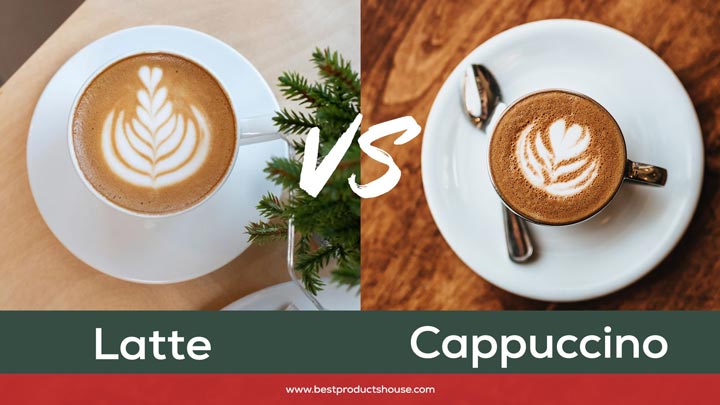
Understanding how these two different coffees are made and knowing the history will add a different dimension to your coffee game.
Contents
Quick Answer: What Is The Difference Between A Latte And A Cappuccino?
In short, Latte and cappuccino are two espresso infused drinks that use the same ingredients but in different ratio; this results in a two different taste satiating different taste buds.
Cappuccino has equal parts steamed milk, froth, and espresso; whereas a latte has a thin layer of froth, and almost double the amount of steamed milk compared to the espresso put in it.
A cappuccino cup is smaller than a cup of latte and their size matters to bring the right flavors. Generally, a cappuccino will taste stronger and a latte will taste creamier with a subtle taste of espresso.
We’ll break the process down even more for you, which might end up helping you find what you personally prefer.
THE COMMON BASE: WHAT IS ESPRESSO?
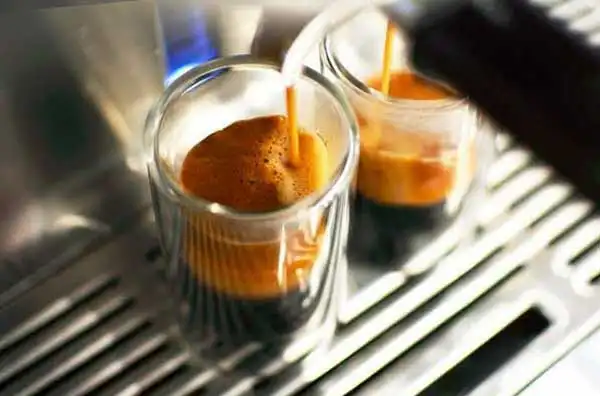
Most coffee lovers rave about espresso. Well, it did earn all its fame and glory.
Espresso is used as a base for most coffee drinks. This is true for latte and cappuccino as well.
This small section of espresso is just here to give you an insight on the base for these drinks.
Espresso has a long-standing history. Back in 1884, the Italians came up with this brilliant drink to enjoy coffee without having to brew for long hours.
Espresso has a distinct method and style of preparation. A complete machine is dedicated to making espressos i.e., an espresso machine. (Check out our writing on the best super automatic espresso machine and the best commercial espresso machine.)
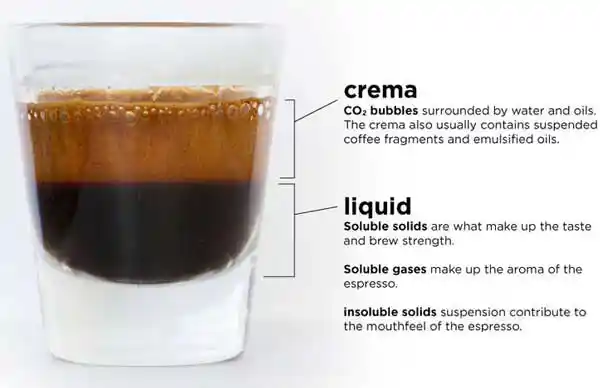
Espresso is the pressed liquid form of coffee. In an espresso machine, finely ground coffee beans by burr coffee grinder are taken in a portafilter (the place where you put the ground coffee) and pressured with a jet of hot water. This results in espresso; pure condensation of coffee.
An espresso shot is full-bodied, condensed coffee packed with rich flavor and amazing aroma. It’s more like a honey texture with a beautiful crema on top.
Packed with caffeine and robust flavors of coffee, they’re consumed in small quantities.
By the way, do you know what is caffeine and how much caffeine is in a cup of coffee? Read those of our complete articles, in case if you want to.
WHAT IS CAPPUCCINO?
Cappuccinos are dialed down espressos. A cup of cappuccino will have equal parts of espresso, steamed milk, and froth. Typically, a cup of cappuccino can be 6 oz in volume and you can customize your cup using cream instead of milk or add different flavors as well. Cappuccino is known for its thick layer of milk foam and its strong coffee flavor.
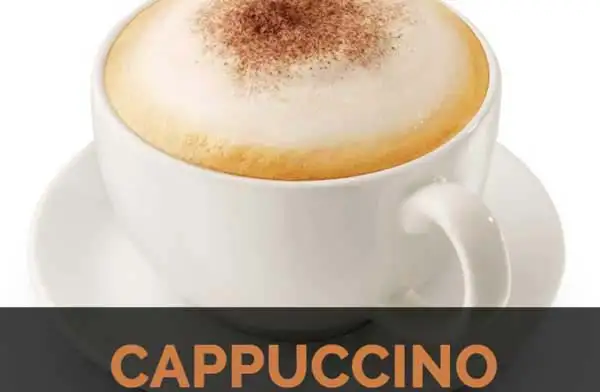
Taste And Texture
With the distinct layering, the coffee flavor comes in more pronounced. The velvety smooth foam of the steamed milk to espresso blend brings out the natural sweetness of the coffee.
The top layer of the milk foam is best undisturbed. If you want, you’re free to spoon in the foam but it might throw off the perfect balance of espresso to milk.
History Of Cappuccino
People have been drinking cappuccinos way before the invention of espresso machines. The origin of the cappuccino takes us to an unexpected place outside of Italy. Vienna, the capital of Austria, is where the cappuccino was invented.
The color of the coffee played an important role in the naming because coffee was mixed with milk or cream until the color of the coffee resembled the color of the robes worn by Capuchin monks.
By far this is the most relatable background to cappuccinos.
Actually, before you know the cappuccinos history, you should learn about the history of coffee and where do coffee beans come from?
How To Make Cappuccino? (Cappuccino Recipe)
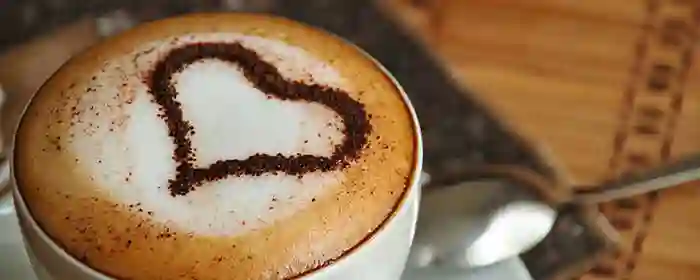
Glad you asked, since it’s an espresso-based drink, the espresso is the heart of the cappuccino. Use an espresso machine or a cappuccino maker whatever you named it, make an espresso from there just add milk. The ratio of espresso to milk to milk foam should be 1:1:1 and that’s what makes it a cappuccino.
The consistency of milk needs to be light and frothy for this drink. A barista usually froths up the milk to a light foam build. Settles the cup and tips the milk from the side in the cup sitting with espresso.
The reason behind doing it is to let the foam of the milk slide easily on top of the espresso, disturbing the balance as little as possible. This keeps the robust flavor of the espresso intact without making it too strong.
By the way, do you know how to make strong coffee that keeps you awake?
WHAT IS LATTE?
Ever felt Cappuccinos are just too intense? Well, you are not alone and that is why we have lattes. Latte is a blend of espresso shots with milk, topped with a light layer of milk foam.

Latte is one of the most beautiful coffee drinks out there. A cup of latte is served with beautiful latte art on top and the usual size of latte ranges from 10 to 12 oz or more.
Latte is short for “caffelatte” or “caffellatte” breaking the latte meaning down means “coffee and milk”. The name is justified considering all that goes in a latte is espresso and milk. Latte is an Italian word that simply means milk.
Taste And Texture
When you sip into a cup of latte, you’ll see how your lips first hit a super soft light foam layer of milk. It shouldn’t be more than 1cm thick. Underneath the foam, you’ll taste a subtle espresso which is more on the creamy and smooth side.
You don’t need to stir and mix the milk foam, enjoy it as it is, or maybe do mix it if you feel like doing that.
History Of Latte
Latte is both of Italian heritage then again it isn’t. Around 1867 latte got popular in Italy. American tourists demanded something with less bite.
As the trend of a creamy smooth cappuccino caught up, people flocked around to try it. Latte came around from then and evolved to adapt to modern days.
How To Make Latte?

There are three steps to making a cup of latte. The base is an espresso shot to that you add steamed milk and a little bit of milk foam on top.
A standard latte has ⅓ espresso and ⅔ milk with a sheen of a foam layer.
If you observe a Barista, you’ll notice how they start with espresso as the base. Then they move on to steaming the milk.
The milk is steamed to a light creamy texture. The cup of milk is then tapped a bit to help settle the foam. Then the milk is slowly added to the espresso topped with a little bit of milk foam layer.
Now, you can also try to make a latte yourself if you have your best latte machine for home use. Read our review article on the best latte machines.
Difference Between The Two Coffee Styles (Cappuccino VS Latte)
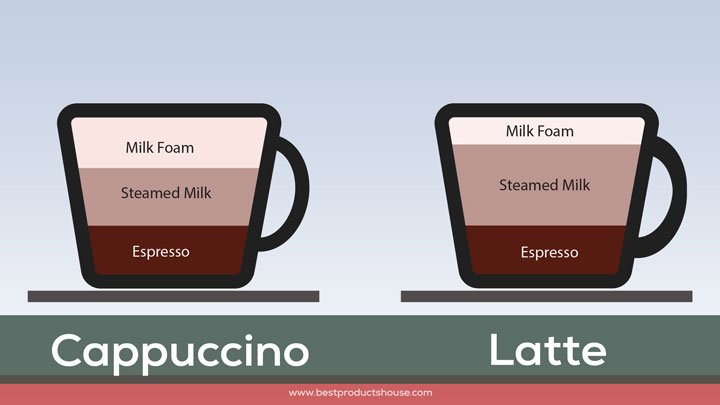
By now it is clear, there is no difference in the ingredient list or the order in latte and cappuccino.
The main difference lies in the ratio and preparation. Although both styles of coffee have the same espresso and milk, they’re not prepared in the same way.
It all starts with the espresso base but when it comes to the milk it’s aerated to a certain texture and consistency.
Do a spoon test, where you place a spoon to rest on top of the milk foam screen of a latte and a cappuccino.
You’ll see the spoon resting on the foam screen of the latte cup sinks much faster than the spoon sitting on top of the cappuccino one.
If it is the opposite for you then it’s evident you’re latte and cappuccino aren’t really what they say they are. Barista’s who lack consistency would result in such outcomes.
Presentation Of Latte And Cappuccino
The difference between a cup of latte and a cup of cappuccino is most evident in their looks.
Cappuccino is named solely after its presentation. The top of this coffee drink is white from milk foam edged with the hue of crema from the espresso shot. Giving it a wonderful caramel factor on the edges of the cup.
The latte on the other hand is no simple coffee drink. A lot of effort goes into the presentation. These kinds of coffee have beautiful art etched on the top.
Baristas train long and hard to perfect the latte art. Etching a flower or a heart is a signature hallmark practiced by baristas everywhere for lattes.
Variations Of The Two Coffee Styles
Amazingly, there are plenty of varieties of both latte and cappuccino. Whether you’re a latte fan or a cappuccino, both have the option of adding flavors.
Popular flavor choices are vanilla, hazelnut, almond, toffee, caramel, peppermint, cinnamon, and more. These flavored coffee drinks are served both hot and cold.
Other than flavor variety cappuccinos offer a few more varieties in terms of consistency.
There’s a wet cappuccino and a dry cappuccino.
Wet cappuccinos resemble more of a latte in terms of taste. The blend of hot milk and espresso makes it creamy with a little milk foam on the top.
A dry cappuccino is served with less milk and more milk foam, the espresso hits on a stronger note with this type of cappuccino.
The iced vanilla latte recipe of “Snacks and Sips” has a huge fanbase, other than flavor variations latte doesn’t really have any consistency agenda.
Calorie Content Of Latte and Cappuccino
Counting your calories? In plain words, a latte is higher in calories than a cappuccino.
The milk ratio is what contributes to this content.
For a standard latte of 16 ounces (475 ml), the calorie count stands at 206 with 8 grams of fat.
A standard Cappuccino on the other hand is a bit low on the meter with 130 calories and 5 grams of fat.
Let’s Watch a Video Review: Latte VS Cappuccino, What’s the Difference?
READ NEXT: Pour Over Coffee VS French Press: Which One is Best for You
Frequently Asked Questions (FAQs)
It all comes down to personal preferences. If you prefer something mellow then you can opt for the latte. But if you prefer a distinct coffee flavor but not too much, try a cup of cappuccino.
They can have the same amount of caffeine since the amount of espresso stays the same.
The ratio of espresso in cappuccino is more compared to a latte. Milk content in a latte is higher than it is in a cappuccino, diluting the coffee in terms of coffee.
NO, a latte is not stronger than a conventional regular coffee. Latte is a blend of coffee and milk but a regular coffee is usually water and coffee only.
Since you need to make milk foam, it is done best with whole milk. Whole milk can retain more foam maintaining the smooth soft texture all along.
Whole milk is the best option for a cappuccino. If you want a velvet smooth cappuccino top then opt for full-fat milk. This gives you a thick and creamy foam.
On a diet, you can switch from whole milk to low-fat or skim milk but that’ll compromise the creaminess of the milk foam.
CONCLUSION
We hope now you know what is the difference between a latte and a cappuccino. Ideally, these are some of the set of differences between a latte and a cappuccino.
Not to offend someone, but the history represents that we Americans had preferred toned down coffee from the beginning. Just like how espresso is diluted to make Americano, the European cappuccino is dialed down with more milk to satiate American taste palate.
It’s amazing how much you can do with espresso. Making a cup of latte is easier than a cappuccino, a microfoam is fine for a latte but for cappuccino, your milk needs to be light and frothy.
With this being said, try experimenting with making lattes and cappuccinos at home, even if you don’t get it right the first time it’s still a fun journey.




![6 Best Drip Coffee Maker With Grinder [2023] Best Drip Coffee Maker With Grinder](https://www.bestproductshouse.com/wp-content/uploads/2022/05/Best-Drip-Coffee-Maker-With-Grinder-100x70.jpg)
Heya i am for the primary time here. I found this board and I find It really useful &
it helped me out a lot. I am hoping to offer something back and aid others like you
aided me.
Your article is so cool Thanks for creating it. You made a fan in this guy!
Nice post. I was checking constantly this blog and I’m impressed!
Very useful info particularly the last part
🙂 I care for such info much. I was seeking this certain info for a very long time.
Thank you and good luck.